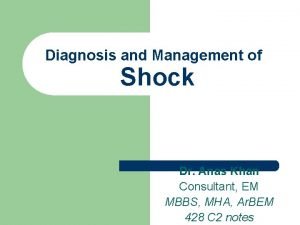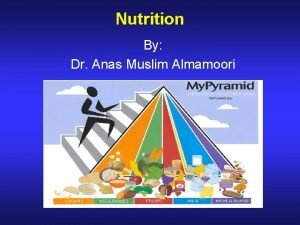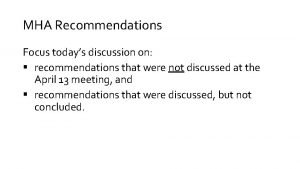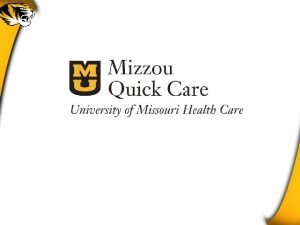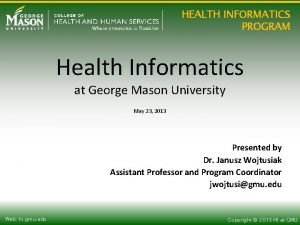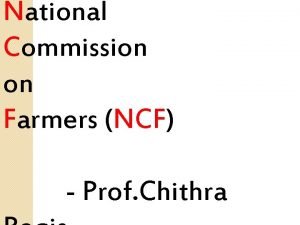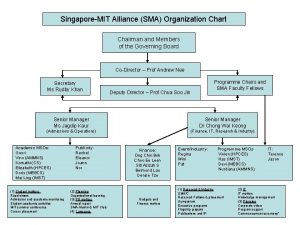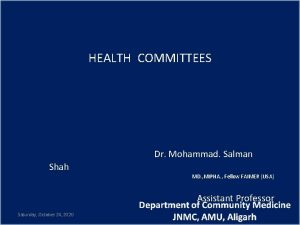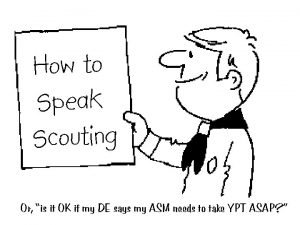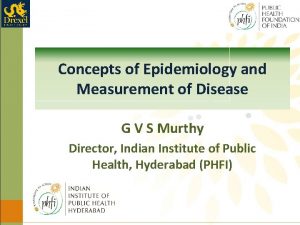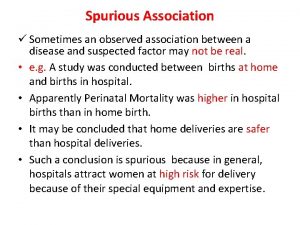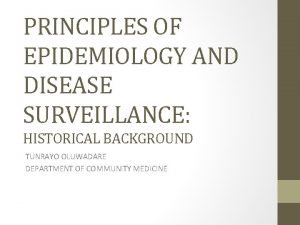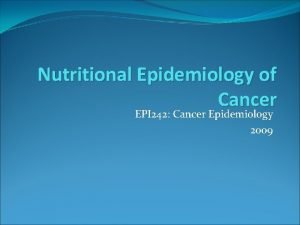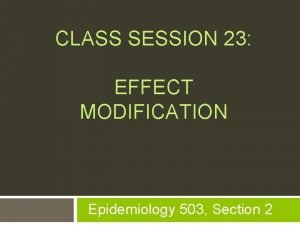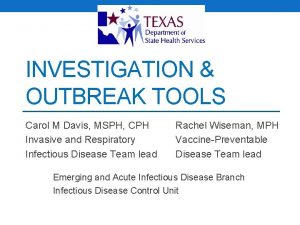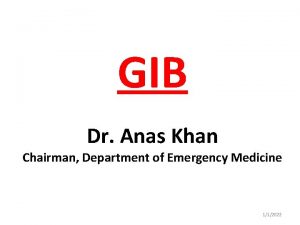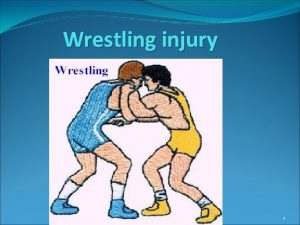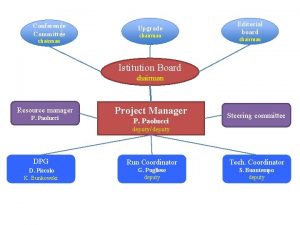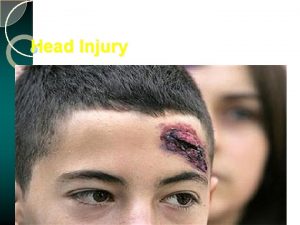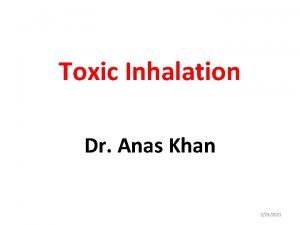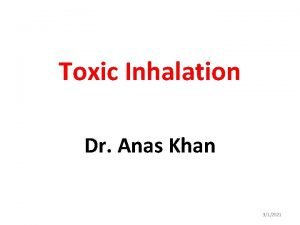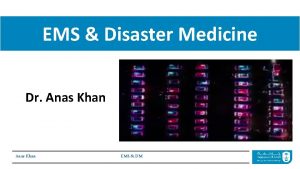INJURY EPIDEMIOLOGY Dr Anas Khan MHA Chairman Department
















































- Slides: 48

INJURY EPIDEMIOLOGY Dr. Anas Khan, MHA Chairman, Department of Emergency Medicine

Objectives • Describe the concepts of injuries • Understand how people get injured in daily lives • Describe important differences between various types of injuries • Understand principles of injury prevention and control • Apply injury epidemiology principles to MVCs 22 October 2021 Injury Epidemiology 2

Headlines • Injuries: concepts and definitions • Classification of injuries • Magnitude of the problem • Prevention and control efforts • Application to road traffic incidents 22 October 2021 Injury Epidemiology 3

CONCEPTS & CLASSIFICATIONS

Definitions - Injury “Acute exposure to agents such as mechanical energy, heat, electricity, chemicals, and ionising radiation interacting with the body in amounts or at rates that exceed the threshold of human tolerance. In some cases, injuries result from the sudden lack of essential agents such as oxygen or heat. ” (Source: Gibson, 1961; Haddon, 1963) 22 October 2021 Injury Epidemiology 5

Definitions - Violence “The intentional use of physical force or power, threatened or actual, against oneself, another person, or against a group or community, that either results in or has a high likelihood of resulting in injury, death, psychological harm, mal-development or deprivation” (WHO, 1996) 22 October 2021 Injury Epidemiology 6

Epidemiological Triad • Host (person) • Agent (that injures: energy) • Environment (vector / vehicle agent / energy) 22 October 2021 Injury Epidemiology 7

Nature of Energy • • Mechanical Thermal / Chemical Electrical Asphyxiation 22 October 2021 Injury Epidemiology 8

Types of Injuries • Intentional: e. g. violence, suicide, homicide, intentional fire-arm injuries. . • Non-intentional (accidental): e. g. MVC, fires, falls, poisoning, drowning-asphyxia, burns, sports, accidental fire-arm. . 22 October 2021 Injury Epidemiology 9

22 October 2021 Injury Epidemiology 10

22 October 2021 Injury Epidemiology 11

22 October 2021 Injury Epidemiology 12

22 October 2021 Injury Epidemiology 13

Trauma Energy • Stresses: contact with energy sources generates forces counter to the load. – Tension: pulling molecules apart – Compression: pushing molecules together – Shear: from tangential force • Strain: extent of deformation (stresses resultant) 22 October 2021 Injury Epidemiology 14

MAGNITUDE OF THE PROBLEM

Injury Pyramid Deaths Injuries resulting in hospitalization Injuries resulting in ambulatory and emergency treatment Injuries resulting in treatment in Primary care settings Injuries treated by paramedics only (school nurse, physiotherapist, first aid) Untreated injuries or injuries which were not reported 22 October 2021 Injury Epidemiology 16

Global & Regional Burden • 12% of global burden of disease • More than 90% of injury deaths occur in low- and middle-income countries • Leading causes of M&M burden in Eastern Mediterranean Region • Road traffic “incidents” are the leading cause of injury deaths worldwide, which strongly applies to GCC/KSA 22 October 2021 Injury Epidemiology 17

22 October 2021 Injury Epidemiology 18

22 October 2021 Injury Epidemiology 19

22 October 2021 Injury Epidemiology 20

22 October 2021 Injury Epidemiology 21

Global status report on road safety 2015. 22 October 2021 Injury Epidemiology 22

http: //www. who. int/violence_injury_preventi on/road_traffic/death-on-theroads/en/#deaths 22 October 2021 Injury Epidemiology 23

22 October 2021 Injury Epidemiology 24

22 October 2021 Injury Epidemiology 25

Types of Data & Potential Sources of Information Mortality • Death certificates • Reports from mortuaries Morbidity and Health-related • Hospitals • Medical records Self Reported • Surveys • Media 22 October 2021 Injury Epidemiology 26

Community-based • Demographic records • Local government records Law enforcement • Police records • Prison records Economic-social • Institutional or agency records • Special studies 22 October 2021 Source: adapted from Krug et al. , eds. , 2002 Injury Epidemiology 27

PREVENTION & CONTROL

LEVELS & CONCEPTS • Primary prevention: raising awareness of the community, at its different levels, as to methods of avoiding injuries. This includes health promotion / health education activities and applying preventive measures accordingly • Secondary prevention: early detection, proper evaluation and management of injuries at different levels of healthcare delivery (primary, secondary and tertiary facilities) • Tertiary prevention: management of complications of injuries, especially disabilities, including rehabilitative measures and approaches, improvement of quality of life of injury victims, as well as palliative care, when needed 22 October 2021 Injury Epidemiology 29

KSA EFFORTS 22 October 2021 Injury Epidemiology 30

http: //moh-ncd. gov. sa/injury/index. php 22 October 2021 Injury Epidemiology 31

o Surveillance System o Education o Capacity Building 22 October 2021 Injury Epidemiology 32

Applications

Application • Host: victim: e. g. driver, passenger, pedestrian. . • Agent: mechanical / thermal energy • Environment: vehicle, road, social 22 October 2021 Injury Epidemiology 34

Application • Primary prevention: This includes legislations, health promotion activities and applying preventive measures (seat-belts, child restraints, air-bags, good roads, following traffic rules, etc) • Secondary prevention: Early detection, proper evaluation and management of RTI at different levels of healthcare delivery (especially tertiary facilities: e. g. emergency / trauma facilities and related services) • Tertiary prevention: Management of complications of RTI, especially disabilities, on medical / social / economic levels, including rehabilitative and physiotherapy measures 22 October 2021 Injury Epidemiology 35

22 October 2021 Injury Epidemiology 36

22 October 2021 Injury Epidemiology 37

22 October 2021 Injury Epidemiology 38

22 October 2021 Injury Epidemiology 39

22 October 2021 Injury Epidemiology 40

22 October 2021 Injury Epidemiology 41

22 October 2021 Injury Epidemiology 42

22 October 2021 Injury Epidemiology 43

“Prevention is the Vaccine for the Disease of Injury” 22 October 2021 Injury Epidemiology 44

Injury Surveillance • • • Assess status Program evaluation Define priorities Stimulate research Standard classification to compare data 22 October 2021 Injury Epidemiology 45

Surveillance Types • Passive: – Routine data collection for dual (original + surveillance) limited resources, by front-lines HCPs • Active: – Seeking injury cases, large resources, by PH services, different data sources • Nature, trends, size, source, clusters, hazards, risks. 22 October 2021 Injury Epidemiology 46

Surveillance Types • Core: – Detection, registration, confirmation, reporting, analytics, feedback. • Support: – Communication, training, supervision, resource provision 22 October 2021 Injury Epidemiology 47

References • • Robertson LS. Injury epidemiology. Research & control strategies. 3 rd edition. Oxford, New York: Oxford University Press, 2007 WHO. World report on violence and health. Geneva: World Health Organization, 2002 Rivara FP. Injury control: a guide to research and program evaluation. Cambridge, New York: Cambridge University Press, 2001 WHO Global Consultation on Violence and Health, Violence: a public health priority. Geneva: World Health Organization, 1996 22 October 2021 Injury Epidemiology 48
 Dr anas khan
Dr anas khan Intentional injury examples
Intentional injury examples Anas nashif
Anas nashif Scalp cornéen
Scalp cornéen Pdm anas
Pdm anas Dr anas alami
Dr anas alami Madiha anas
Madiha anas Mha carrie
Mha carrie Mariadb mha
Mariadb mha Tonya mha
Tonya mha Mha outlook
Mha outlook Mha recommendations
Mha recommendations Sue pereira
Sue pereira Mha patrilineal
Mha patrilineal Mha equipment
Mha equipment Mha kaç cilt
Mha kaç cilt George mason university health informatics
George mason university health informatics Chairman 25
Chairman 25 What is the component of agriculture renewable action plan
What is the component of agriculture renewable action plan Welcome speech for chairman
Welcome speech for chairman Sme chairman
Sme chairman Takeshi uchiyamada
Takeshi uchiyamada Lic agent career growth
Lic agent career growth Fci group chairman
Fci group chairman Chairman agenda
Chairman agenda Chairman chart
Chairman chart Who is this
Who is this Mukherjee committee 1966
Mukherjee committee 1966 Coh chairman scout
Coh chairman scout Certification board of infection control and epidemiology
Certification board of infection control and epidemiology Attack rate calculation
Attack rate calculation Attack rate epidemiology formula
Attack rate epidemiology formula How dr. wafaa elsadr epidemiology professor
How dr. wafaa elsadr epidemiology professor Distribution in epidemiology
Distribution in epidemiology Spurious association
Spurious association How to calculate incidence rate example
How to calculate incidence rate example John snow epidemiology
John snow epidemiology Logistic regression epidemiology
Logistic regression epidemiology Epi
Epi Meaning of epidermiology
Meaning of epidermiology Gordon nichols
Gordon nichols Ramboman analysis
Ramboman analysis Defination of epidemiology
Defination of epidemiology Difference between descriptive and analytic epidemiology
Difference between descriptive and analytic epidemiology Epidemiology definition
Epidemiology definition Confounding vs effect modification
Confounding vs effect modification Field epidemiology ppt
Field epidemiology ppt Bibliography of epidemiology
Bibliography of epidemiology Formula for attack rate
Formula for attack rate
